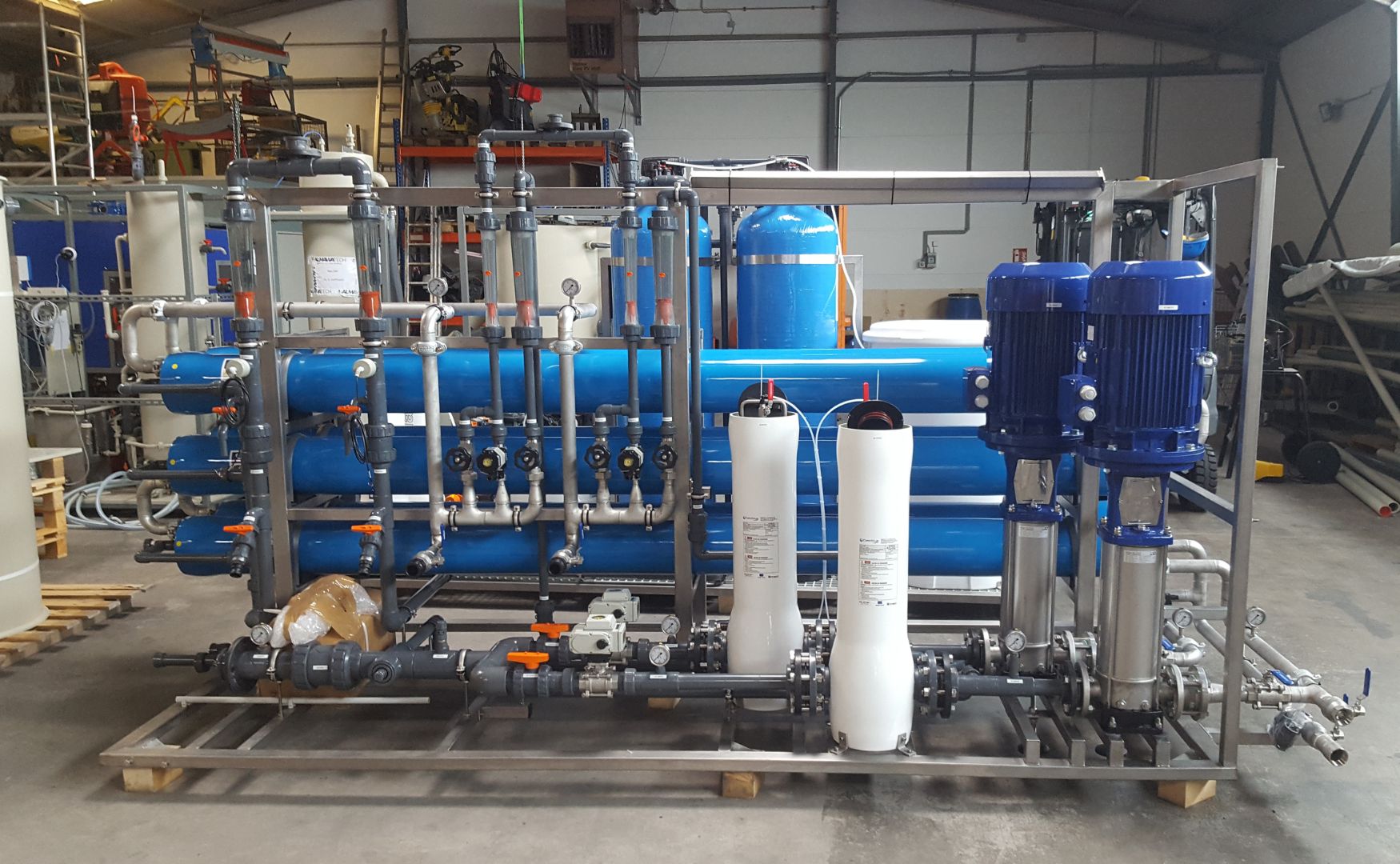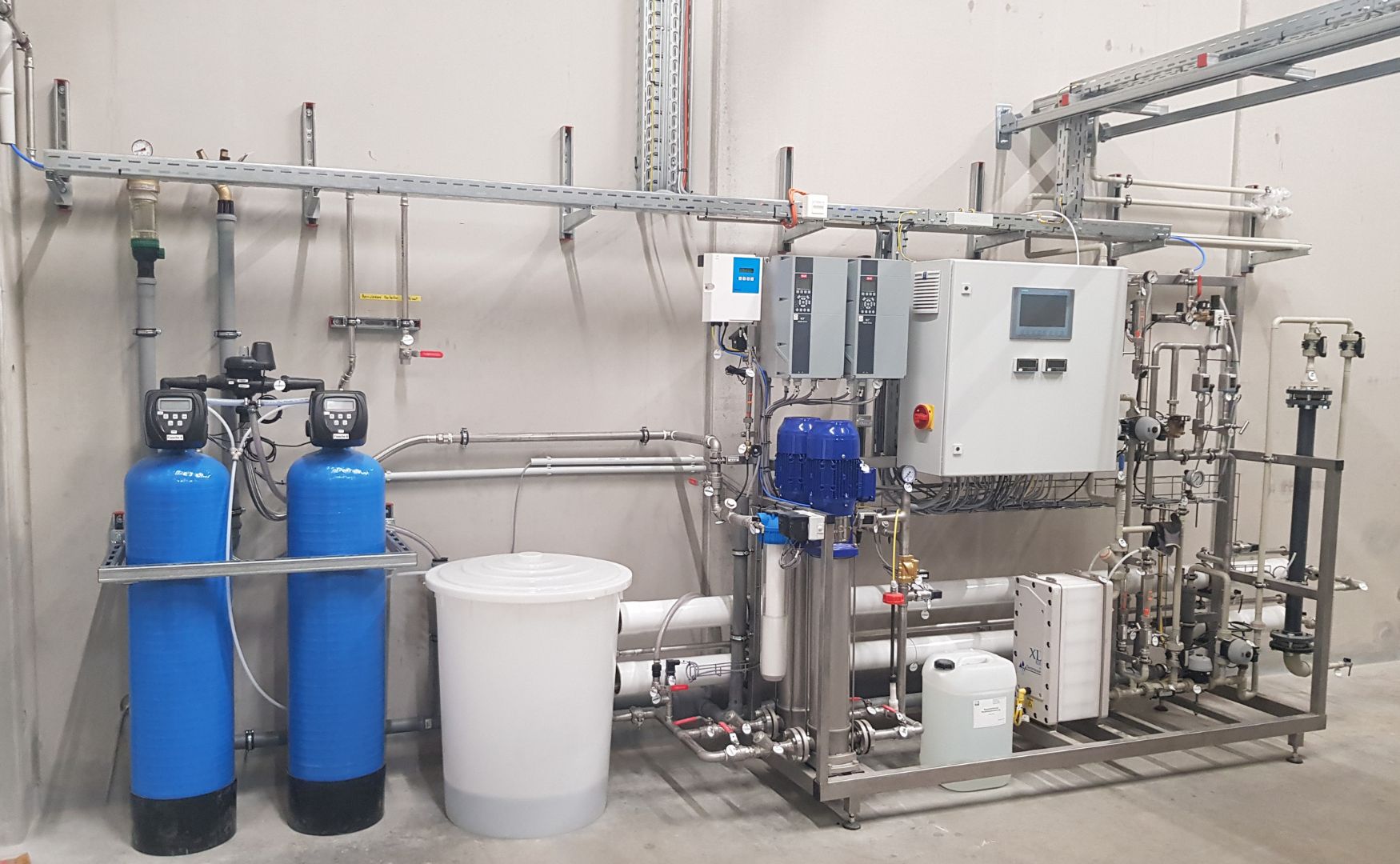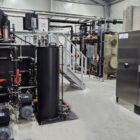Demineralized water (demineralized water) is a high-purity water that is virtually free of dissolved ions, salts and minerals. It is used in numerous industrial applications where high purity standards are required. These include the chemical and pharmaceutical industries, power generation, electronics and food production. This article takes a detailed look at the technical principles, production methods, applications and challenges of demineralized water.
Table of contents
Definition and properties of deionized water
What is deionized water?
Demineralized water is water that has been freed of almost all dissolved salts, organic compounds and suspended solids using special processes. Typical parameters of demineralized water are
Leitfähigkeit: < 1 µS/cm (je nach Anwendung sogar < 0,1 µS/cm).
Gesamtgehalt gelöster Feststoffe (TDS): < 0,1 mg/l.
Ion concentration: Almost no anions or cations.
pH value: Neutral to slightly acidic (6.5 to 7.0).
Differences to other water qualities
Ultrapure water: Even higher degree of purity than demineralized water, especially for applications in the semiconductor industry or in medical laboratories.
Drinking water: Contains dissolved salts and minerals in concentrations that are not permitted for demineralized water.
Decarbonized water: still contains salts such as chlorides or sulphates, which do not occur in demineralized water.

Photo: Our ALMA OSMO VE reverse osmosis system for producing deionized water
Production of demineralized water
1. ion exchange process
In ion exchange, water is passed through special resins that exchange ions (e.g. calcium, magnesium, chloride) for hydrogen and hydroxide ions. These react to form pure water (H₂O).
Cation exchangers: Remove positively charged ions such as calcium (Ca²⁺) or magnesium (Mg²⁺).
Anion exchanger: Remove negatively charged ions such as chloride (Cl-) or sulphate (SO₄²-).
Mixed bed ion exchanger: Combine both processes in one step.

Photo: Our reverse osmosis system for treating wastewater for internal reuse (Water-ReUse)
2. reverse osmosis (RO)
Reverse osmosis is a pressure-driven membrane process that removes up to 99% of dissolved substances from water. It is often used as a preliminary stage in the production of demineralized water, especially when high purity requirements are needed.
3. electrodeionization (EDI)
EDI combines ion exchange and electric fields to continuously produce deionized water. It is used after an RO stage to further reduce conductivity.

Photo: Our reverse osmosis system for the production of pure water, incl. softening system and electroionization
4. distillation
In distillation, water is evaporated and then condensed. This process effectively removes dissolved salts, but is energy-intensive and is rarely used for large quantities of demineralized water.
Applications of demineralized water
1. energy generation
In power plants, demineralized water is used as boiler feed water to prevent the formation of deposits and corrosion in steam boilers. The high purity of demineralized water contributes to the efficiency and longevity of the systems.
2. chemical and pharmaceutical industry
Reaction medium: Many chemical reactions require water without impurities to ensure product quality.
Production of medicines: Deionized water is used for the production of active pharmaceutical ingredients and for cleaning systems.
3. food and beverage industry
Production of beverages: Demineralized water is used to ensure consistent taste profiles and high quality standards.
Cleaning: Deionized water leaves no residue on production equipment.
4. electronics industry
Deionized water is indispensable in the production of semiconductors and printed circuit boards. It serves as rinsing water and minimizes the risk of contamination.
5. laboratory applications
In research and development, deionized water is used as a solvent and for analytical processes, as impurities could falsify the results.
Challenges in practice
1. corrosion
Due to its purity, deionized water has a high solubility and can corrode metals. It is therefore necessary to use corrosion-resistant materials such as stainless steel or plastic in pipes and tanks.
2. operating costs
The production of demineralized water is energy and chemical-intensive, especially where high purity requirements apply.
3. membrane fouling and resin depletion
Pre-treatment steps such as filtration or decarbonization are essential to prevent fouling and scaling in reverse osmosis and ion exchange systems.
4. regeneration and disposal
Ion exchange resins must be regenerated regularly, producing concentrated brine solutions. The environmentally friendly disposal of this waste water is an important aspect.
Conclusion
Demineralized water is an indispensable component of numerous industrial processes where high purity standards are required. The selection of the right technology and careful planning of the treatment plant are crucial to ensure stable and economical production of demineralized water. Modern systems offer innovative solutions to minimize energy consumption and reduce environmental impact.
For further information on our products, please feel free to contact us at any time!








